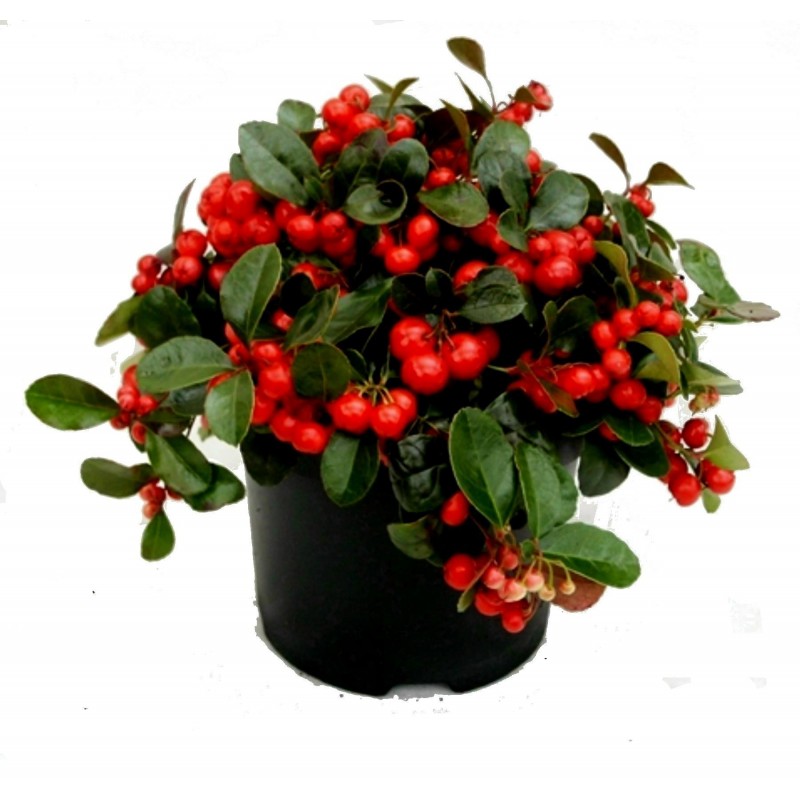Wintergreen Seeds - Gaultheria procumbens (Edible Fruits)
Price for Package of 5 seeds.
Ground Cover, Evergreen, Edible Fruits, Fragrant Leaves, Medicinal. Wintergreen is a member of the Heath family that forms large mats of glossy green groundcover in the woods. This creeping, rhizomatous shrublet grows to 6 inches tall with scalloped or bristly toothed, glossy, dark green leaves which turn reddish with the advent of cold weather. Foliage has a strong wintergreen scent when crushed. Bell-shaped, nodding, white or pale pink flowers appear in May thru summer and mature to aromatic scarlet fruit that often persists through the winter. This semi-woody, aromatic perennial has creeping underground stems, thus forming small colonies of plants.
Wintergreen is the source of wintergreen oil, which is used as a flavoring in candies, chewing gum and some medicine. The leaves are used as a tea.
Wintergreen was used by Native Americans to brew a tea. Mohawks, as well as Ojibwes and others, knew the tea as medicinal as well as a healthful beverage. It contains methyl salycliates, the active pain killlers of aspirin, useful for colds, headaches and to bring down fevers. Such names as "teaberry" emphasize importance as a year-round beverage and as a food flavoring for meat and fish cooked with fermented leaves. The berries are cooked into pies and eaten raw during the winter by some tribes. The genus was named for Dr. Gaultier, a Canadian physician of the mid-18th century.
Leaf: Alternate, simple, evergreen, oval to elliptical, 1 to 2 inches long, minutely serrated, thickened with a wintergreen odor when crushed, leaves appear whorled since they cluster at tips of plant; dark shiny green above, much paler below often with black dots.
Flower: Monoecious; small, 1/4 inch, white, urn-shaped, hanging from short stems from leaf axils, appearing in mid to late summer.
Fruit: Red, round, 1/4 to 1/2 inch in diameter, hanging beneath the leaves, mild wintergreen taste, ripen in late summer and persist into winter.
Twig: Slender, green turning brown with age.
Bark: Light brown.
Form: Low plant with a height of only 3 to 5 inches; stems shoot out of the ground and end in a tight cluster of leaves.
Wildlife: Fruit is eaten by a variety of mammals and birds including: chipmunks, deer, grouse and partridge. Leaves are browsed by deer and moose.
Other Names: Box Berry, Checkerberry, Deerberry, Eastern Teaberry, Ground Holly, Mountain Tea, Creeping Wintergreen, Ground Tea, Partridge-Berry, Petit the du bois (Quebec, "little tea of the woods"), Redberry Wintergreen, Spice Berry, Teaberry, Winisibugons (Ojibwe, "dirty leaf").
Zone: 3 to 8
Growth Rate: Slow
Plant Type: Perennial Ground Cover
Family: Ericaceae
Native Range: Eastern North America
Height: 2 to 6 inches
Spread: 12 to 16 inches.
Shape: Ground Cover. Creeps underground to form mats.
Bloom Time: May thru Summer.
Bloom Color: Urn-shaped, white with hints of pink.
Sun: Full to Part Shade
Fall Color: Leaves develop reddish tinge in cold weather.
Drought Tolerance: Very low to none. Needs moist soil.
Water: Medium to High
Maintenance: Low
Site Requirements /Soil Tolerances: Prefers organic, acid soils with good drainage. Needs cool, moist soil and climate. Dislikes heat and humidity, best in areas with cool summers. Will not tolerate drought.
Uses: Suitable for woodland plantings, rock gardens, or heather gardens. Edible fruits.
For more information about seed pretreatment and growing trees and shrubs from seed, please try the following link:
http://www.forestresearch.gov.uk/website/forestresearch.nsf/ByUnique/INFD-7F8AJ4
|
Sowing Instructions
|
|
Propagation:
|
Seeds
|
|
Pretreat:
|
soak in water for 24 hours
|
|
Stratification:
|
3-4 months in moist sowing mix at 2-5 ° C refrigerator
|
|
Sowing Time:
|
all year round> Autumn / Winter preferred
|
|
Sowing Depth:
|
Surface Sow, need light to germinate!
|
|
Sowing Mix:
|
Coir or sowing mix + sand or perlite
|
|
Germination temperature:
|
18-20 ° C
|
|
Location:
|
bright + keep constantly moist not wet
|
|
Germination Time:
|
3-6 weeks
|
|
Watering:
|
Water regularly during the growing season
|
|
|
Copyright © 2012 Seeds Gallery - Saatgut Galerie - Galerija semena. All Rights Reserved.
|




